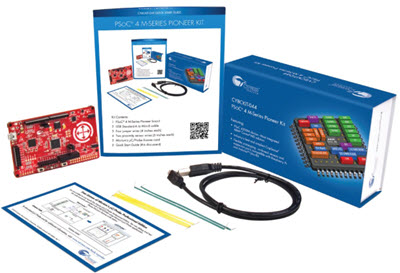
|
For novel ideas about building embedded systems (both hardware and firmware), join the 35,000 engineers who subscribe to The Embedded Muse, a free biweekly newsletter. The Muse has no hype and no vendor PR. Click here to subscribe.
|
Reader George Farmer alerted me that Heathkit will resume selling electronics kits. Heathkit was once famous as a - or perhaps the - purveyor of electronics kits of all sorts. Though the company got its start in the aviation business, the tsunami of cheap surplus electronic components after World War II pushed the company into the kit business.
Today they are remembered mostly for their ham radio products and test equipment, but the company also had kits for a lot of other devices. TVs were very popular, as were their broad line of hi-fi gear.
They even had retail stores; I often hitchhiked to their store here in Rockville, Maryland. The company's catalog occupied me late into the nights as I lusted after so many of their products. My first Heathkit was a pair of walkie talkies, each of which probably had a dozen or so transistors. That was around 6th grade; I was despondent when the finally-assembled units didn't work. Days of checking uncovered the problems and the units finally became operational. But, as usual, I found the building much more fun than the using.
I assembled a Heathkit stereo, and an audio frequency generator. The latter used a very cool light bulb wired between the cathodes and suppressor grids to stabilize the circuit. A simple tube-based regenerative receiver taught me a lot about radio basics. People used to actually fix failed electronics back in the 60s, and I built a Heathkit color bar generator for my TV repair work.
In 8th grade I desperately wanted a Heathkit VTVM (vacuum tube voltmeter) and saved an entire summer's worth of lawnmowing money - $29 - for the kit. But then my dad gave me a very old tube-based Devry oscilloscope/VTVM combo. By high school I had purchased and built a transistorized Heathkit scope that had triggered sweep. A crummy design, the DC biases drifted randomly and constantly, but I loved that scope.
Being young and chronically short of money I never built any of their ham gear, but one friend did have the SB-101 SSB transceiver, which likely introduced many hams to single sideband. It resembled a fabulously-more expensive Collins radio, and worked amazingly well.
The company even had a computer kit, long before the PC revolution. The EC-1 had 9 vacuum tube op-amps, with critical terminals brought to binding posts on the front panel. "Programming" meant wiring components (resistors, capacitors, etc) to the posts. A typical application was the solution of differential equations. The whole notion was beyond me at the time, but the thing looked very cool.
The company did enter the PC business, and had a long and checkered history thereafter, being purchased, sold, diced and sliced many times. By 1992 they had abandoned the kit business, and lived on as an educational company, trading on their expertise developed via the kit assembly manuals, which were widely praised for being brilliantly clear. Indeed, many folks with no electronics background built the kits, since the step-by-step instructions guided one with great clarity.
The kits petered out, victims of SMT and a declining interest in building stuff. But I have hopes the latter is in decline. DIY events like Maker Faire seem to be rekindling the spirit of home brew innovation. I became an engineer because I like to make stuff, and one hopes that Heathkit's reemergence into kits will spur young folks' interest in this amazingly rewarding career.
Published August 26, 2011


